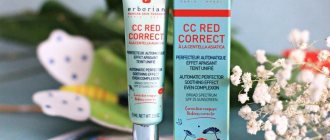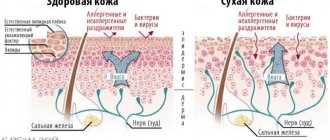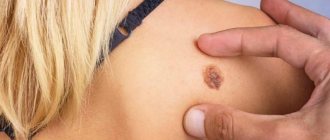Due to the deterioration of the environmental situation, especially in large cities, it is not surprising that patients increasingly began to complain about increased sensitivity of the facial skin. This type of skin requires special care. Considering the close connection between the condition of the skin and the general condition of the body as a whole, it should be understood that there cannot be template programs for facial skin care; each patient needs an individual approach. It is primarily necessary to establish the cause of increased skin sensitivity.
What is sensitive skin?
Many experts classify sensitive skin as a separate type. But this is not entirely true. Oily, dry, and even normal dermis can be sensitive.
If your skin is prone to sensitivity, then you have already noticed that it is difficult for you to choose cosmetics (both skincare and decorative), the dermis reacts to any irritant (even dust and sunlight) with rashes. Poor nutrition and poor sleep quality are immediately reflected on your face.
It is girls who most often suffer from increased sensitivity of the dermis. If you have blond or red hair, gray or green eyes, thin, almost transparent skin, then you are more prone to irritation than others. This is due to the fact that the stratum corneum is poorly expressed, there is almost no pigment, and little sebum is secreted. This is why the epidermis is most sensitive to internal and external irritants.
Sensitivity is often confused with an allergic reaction. But this is not entirely true. Allergies are caused by the same foods, and by eliminating them, you can cope with the problem. But sensitivity can appear suddenly, each time for different reasons.
To maintain your skin in normal condition, you will have to monitor the pace of your life more carefully. Remember that all problems come from within, so first of all it is important to eat right and get enough sleep. But don’t forget about visible manifestations - don’t choose the right skincare products. In this case, you can live with minimal manifestations of sensitivity.
Causes
As we know, there are four types of facial skin: normal, oily, dry and combination. If the skin reacts violently to any external manifestations and irritants, then they often speak of a sensitive type. The reasons why the skin has become sensitive may lie in damage to the epidermal barrier. In other words, if the skin on your face suddenly begins to react more sharply to external or internal stimuli, then it’s time to think about what could serve as a catalyst for change. Cold wind in the off-season, frost and cold in winter, scorching summer heat, and just a banal reaction of the body to new beauty products and now we are in a hurry to ring the bells and sound the alarm. However, you should not immediately fall into hypochondria and make an appointment at the nearest aesthetic medicine clinic, as soon as you feel a slight tingling sensation and see a crimson blush on your face.
Interesting!
According to some surveys, approximately 2/3 of European women complain of increased sensitivity of facial skin.
Signs of sensitive skin
The most common manifestations of sensitivity:
- Redness appears in places. May create an unpleasant sensation in areas;
- Peeling, a feeling of tightness and dryness are most often characteristic of those who have dry skin. But with dehydration, such signs also appear;
- Constant rashes - pimples, blackheads and blackheads sometimes appear for no apparent reason;
- Itching - the skin itches, irritates and causes severe discomfort.
Did you eat the bun? Get a pimple. Did you go outside without sunscreen? You will go crazy from the feeling of tightness and itching. Did you buy the wrong cream? Expect peeling.
Moreover, the sensitive type reacts to the stimulus as quickly as possible - either in the first minutes or the next morning. But this is very convenient - this way you can accurately identify the cause and eliminate it.
Signs
- painful pallor of the face;
- facial skin instantly reacts to touch;
- habitual washing causes a feeling of tightness;
- with sudden changes in ambient temperature, local redness of certain areas of the facial skin occurs;
- in the solarium and on the beach you use sunscreen with an SPF of at least 50 and still manage to get sunburned.
Let us add that in men, signs of sensitive facial skin become noticeable when shaving: a small red rash appears, red spots appear, and an unpleasant tingling sensation occurs. In addition, if you shave inaccurately, there is a risk of cuts, through which the product before (after) shaving can penetrate into the wound and cause irritation.
Main causes of skin sensitivity
Skin problems can be affected by both internal and external factors.
External ones include:
- Sudden temperature changes;
- Chlorinated water;
- Incorrectly selected cosmetics;
- Cosmetic procedures (aggressive peelings, scrubs, laser);
- Environmental pollution;
- Medications in the form of ointments and gels;
- Ultra-violet rays;
- Increased humidity or, conversely, dryness.
Internal factors:
- Lack of water in the body (even if you drank too little water during 1 day) - for health it is necessary to maintain a normal amount of fluid. This is important not only for the beauty of the skin, but also for the whole body. So drink a glass of life-giving moisture right now;
- Hormonal imbalance - excess testerone, estrogen dominance and other hormonal problems are primarily reflected on the face;
- Regular stress and worries - all the problems are out of your head, remember? Therefore, it is so important to monitor the quality of your life, exclude events that will make you very worried and learn to calm yourself in time with the power of thought;
- Poor nutrition - monitor the amount of dietary supplements you consume and eliminate food waste. Then not only will the acne disappear, but you will also feel much better;
- Medicines - sometimes we have to resort to pills and other medications. Don't worry - as soon as you finish the course of treatment, the condition of your skin will improve (of course, if you take proper care of it). But, if it is possible to change the drug, do it. Just don’t self-medicate, but discuss your every step with your doctor;
- Lack of sleep - any living organism needs to rest. Even the flowers are closed at night! Add at least 7-8 hours of sleep into your routine and you will soon notice pleasant changes;
- Chronic diseases - some diseases negatively affect the condition of the skin. Consult your doctor - he will tell you the best thing to do;
- Bad habits have never brought health to anyone. Eliminate them from your life once and for all.
Most often, the cause of damaged skin is several factors at once, and this leads to more complex and lengthy treatment. And, if it’s easy to get rid of external irritants, then you will have to work with internal causes for a longer time.
Dehydrated skin
Not only dry skin, but also combination and even oily skin can suffer from a lack of moisture. The dry type is characterized by reduced secretion; dehydrated skin lacks hydration, which is why sensitivity occurs. Dehydration often appears against the background of aggressive cleansing. Oily and combination skin intuitively wants to be dried out and mattified. Here you should be very careful and observe moderation - if you deprive the skin of its protective barrier, it will try to replenish it with excess sebum secretion. So you will get shine on some areas of the face, and itching and peeling on others.
Proper care for sensitive skin
Remember that excessive sensitivity is temporary. To get rid of the problem, you need to start acting quickly and comprehensively. No skincare products will help if you don't take care of yourself from the inside.
- Start eating right - eliminate all the junk from your diet that only clogs the body and does not give it energy and the right calories. Forget about mayonnaise, carbonated drinks, fast food, buns and cakes. Replace them with clean water, fresh fruits and vegetables. Don't forget about greens - onions, dill, spinach and microgreens. By the way, the best products are those grown with your own hands. Even in winter, you can grow microgreens within the walls of your home. The sprouter from Beauty 365 will help you with this - it will simplify the process and make it as fast as possible.
- Every living organism needs water. There will be no life without her. Drink at least 1.5 liters of fluid every day. This will help remove all waste and toxins from the body naturally. A clean body is a healthy body.
- Limit the use of medications. Use them only as prescribed by a doctor and do not self-medicate! This is what leads to unnecessary breakouts.
- Clean your home regularly. Dust and dirt can cause skin problems. But when cleaning, avoid chemicals or wear gloves - whitening and other products can cause skin problems.
- Humidity is also an important indicator. If the room is dry, install a special humidifier. And if the humidity is high, open the windows more often. You can also buy a salt lamp. When turned off, it absorbs excess moisture, and when turned on, it humidifies the air.
- Take care of yourself from stress! This negatively affects the functioning of the entire body. Remember that you are alone and that is why it is so important to take care of your health. If you can’t eliminate all irritating factors from your life, take up meditation. It will allow you to put your thoughts and feelings in order. And if you also lie on a cushion with lavender, then additional aromatherapy will relieve all neuroses.
- Sleep is the best way to rest. If a person sleeps little, he quickly gains weight (because the body replenishes the missing energy with food), ages, and simply becomes more nervous. Healthy sleep will help solve many problems. Don't neglect it because of work or other things, even if they are very important. Your well-being should come first.
- Alcohol and cigarettes disrupt cellular metabolism and, as a result, tissues do not receive enough nutrients and oxygen. And at the moment of removing alcohol from the body, the skin becomes hypersensitive, as harmful substances evaporate through the dermis.
Only after limiting all negative factors will skin care work correctly. By the way, perhaps acne will disappear completely if you start taking care of your health comprehensively, and not just about the beauty of your face. After all, the face is the first place where signs of an unhealthy attitude towards life and oneself appear.
But we must not forget about the main stages of care. This is cleansing, toning and moisturizing. They are important for all skin types, but if you are sensitive, you should carefully read the composition. It should be short and as natural as possible.
It is best if the composition contains natural oils, mountain water, and extracts of medicinal herbs. And leave gels, lotions and tonics with alcohol and fragrances in the store. They definitely won’t help you and, on the contrary, they will harm you. Learn why this or that chemical component is needed, but it is better to minimize everything artificial when caring for your skin, as such products can cause allergies. Take a closer look at the products from Beauty 365 - they all have the ideal composition, so they will make your care correct and complete. And many products can be used not only to care for the face, but also for the body. It is very comfortable!
Sensitive skin can be defined as skin with erythema and/or abnormal tingling, burning, tingling (occasionally pain or itching) in response to various factors, which may be physical (UV radiation, heat, cold and wind), chemical (cosmetics , soaps, water and pollutants) and sometimes psychological (stress) or hormonal (menstrual cycle) nature. Diagnosis, pathophysiology, epidemiology and treatment are still under debate. Sensitive skin occurs most often due to neurogenic inflammation following excessive activation of sensory proteins in keratinocytes and nerve endings. Skin sensitivity is a very common condition due to the fact that it can be detected in approximately half of the population. Treatment is primarily caution when using cosmetics or using cosmetics without preservatives and surfactants or containing inhibitors of neurogenic inflammation.
Introduction
The term “sensitive skin” is in most cases used to describe many unpleasant sensations of varying intensity and transient in nature. Although the presence of sensitive skin has been debated in the past, it is now accepted that sensitive skin can be identified clinically as the presence of abnormal tingling, burning, pain, itching or stinging in response to various factors that may be physical (UV radiation, heat, cold and wind), chemical (cosmetics, soaps, water and pollutants) and sometimes psychological (stress) or hormonal (menstrual cycle) nature. Erythema is an irregular symptom, but can often take place among the complaints. Despite this, from the moment this syndrome was identified to the present day, its single, consensus definition is still missing.
Sensitive skin is also known as reactive or over-reactive skin, intolerant skin or irritable skin. The term "reactive skin" seems to be preferable to "sensitive skin", which can be confused with sensitized skin in allergic diseases. Although the pathophysiology of sensitive skin remains unclear, the underlying mechanism is not immune or allergic.
Tests that can help make the diagnosis include the prick test, the heat temperature sensitivity test, and the capsaicin test. However, diagnosis depends on history, which is obviously a more reliable method, demonstrating, as defined by the syndrome, skin sensitivity in response to various factors.
Classifications
A number of classifications have been proposed but have not received general acceptance. Yokota et al. proposed a classification of 3 different types based on physiological parameters:
Type 1: group with low barrier function of the patient's skin, transdermal water loss and abnormal desquamation.
Type 2: inflammatory group with normal barrier function and inflammatory changes.
Type 3: neurosensitive group with normal barrier function and no inflammatory changes.
Mills and Berger proposed dividing sensitive skin into 4 groups, according to dermatological background:
Group 1: people with chronic skin disorders.
Group 2: Similar visible dermatologic disease as Group 1, but symptoms are minimal or atypical.
Group 3: normal people who have had significant trauma in the past, such as sunburn or contact allergies; many years later, the injured areas will be unusually tender but appear unchanged.
Group 4: People who do not fit into any of the previous categories but report abnormal sensitivity to topical agents without visible skin changes.
Willis and de Lacharrière divided sensitive skin into 3 subgroups, according to trigger factors:
- severely sensitive skin: very high skin reactivity to all types of factors;
— skin sensitivity to topical factors;
- skin sensitivity to environmental factors.
Instead, according to severity, I propose a classification into 4 groups:
- very sensitive skin
- sensitive skin
- slightly sensitive skin
- insensitive skin
Pathophysiology
Histological examination rarely demonstrates vasodilatation with an inflammatory infiltrate. In general, there are no histological abnormalities. The usual absence of infiltration indicates that in this case the innate or acquired immune response does not play any role. Skin sensitivity is most commonly reported by patients with atopic dermatitis or other allergic conditions, but most patients with sensitive skin do not have atopy.
The barrier function of the skin, damaged in some patients, leads to transdermal water loss, which may facilitate contact with trigger factors. However, damaged barrier function is not found in all people with sensitive skin. It is assumed that sensitive skin and dry skin are different phenomena, because... No association was found to suggest that dry skin and damage to the skin barrier could contribute to skin sensitivity by facilitating contact with trigger factors. On the contrary, skin sensitivity can contribute to dry skin. Dry skin and skin sensitivity may also be the result of a similar pathogenetic mechanism, in the case of a combination of both conditions. Regular use of moisturizers is believed to improve skin sensitivity.
Abnormal sensitivity and vasodilation reflect involvement of the cutaneous nervous system. Neurotransmitters such as substance P, calcitonin gene-related peptide, and vasoactive interstitial peptide can cause neurogenic inflammation with vasodilation and mast cell degranulation. Neurogenic inflammation is determined by the release of neuropeptides (nerve endings) that cause inflammation.
The fascinating and mysterious aspect of sensitive skin is that the triggering of the pathological process is due to very diverse factors. Although it has never been demonstrated, the role of transient receptor potential (TRP) channels in cutaneous sensitivity is clear. Sensitive skin is characterized by a response to numerous factors, which can be physical and/or chemical, and TRP channels are the only molecules that can be activated by these individual factors. Abnormal or excessive activation of TRP channels seems highly likely. In the skin, TRP channels are expressed on nerve endings, Merkel cells, and keratinocytes. TRPV1 is activated by capsacin, phorbol esters, heat, and hydrogen ions; TRPV3 – heat and camphor; TRPV4 – heat, mechanical stress, hypoosmotic stress and phorbol ester derivatives. Cold and menthol activate TRPM8. TRPA1 is activated by cold, wasabi, mustard, horseradish and bradykinin. TRP channels are best activated by other substances found in cosmetics. Activation of TRP channels is accompanied by the flow of calcium ions into the cell and then depolarization. Interestingly, activation of TRPV4 on keratinocytes causes damage to the skin barrier.
In summary, it is hypothesized that epidermal TPR channels are overstimulated or overexpressed by various factors in sensitive skin. Consequently, this leads to the release of neurotropins and neurotransmitters, which cause neurogenic inflammation of the skin.
Skin explants are convenient models for dermatological studies. Explants together with neurons can be a very interesting model for studying cutaneous sensitivity in vitro. Neurons and keratinocytes cultured together are another valuable model for in vitro studies of sensitive skin. Cells from a neuronal cell line can also be cultured with keratinocytes. In these models, neurogenic inflammation can be measured based on neuropeptide release or electrical activity. The calming effect of substances used in cosmetics can also be measured.
Functional MRI was used to evaluate the neuronal response when lactic acid was applied to the face of women with and without sensitive skin. Lactate-induced skin discomfort resulted in increased activity in the contralateral primary sensorimotor cortex and in the bilateral frontoparietal network. In patients with sensitive skin, group activity extended only to the ipsilateral primary sensorimotor cortex and the bilateral periinsular secondary somatosensory area. These findings in turn also show an increase in neural activity. These results suggest central nervous system involvement and provide insight into the role of stress in sensitive skin.
Thus, the pathophysiology of skin sensitivity remains poorly understood due to difficulties in defining and diagnosing the condition and because sensitive skin can be a heterogeneous phenomenon. Sensitive skin is an excess of physiological reactions with a key role in this of the nervous system. With sensitive skin, the skin sensitivity threshold is abnormally low.
Testing
Reproducible tests are needed to estimate the prevalence and count of sensitive skin, but unfortunately, there are no simple, reliable tests. Due to the tremendous variability in the manifestations of sensitive skin, research in this area is very difficult. Moreover, it is not clear whether a patient with a low threshold for any one stimulus is susceptible to all other stimuli.
Mariott et al. carried out an analysis of various test methods. Thus, the Frosch and Kligman tingling test consisted of applying lactic acid to the nasolabial folds, followed by a subjective assessment of the intensity of the symptoms. Previous articles suggested that this was the most appropriate method. However, Mariott et al. showed that the nasolabial test is a poor predictor of overall skin sensitivity. They tested 4 chemicals that produced different enhanced sensory effects (lactic acid, a tingling sensation; capsacin, a burning sensation; menthol, a cooling sensation; and ethanol, a mixture of burning and tingling sensations) on 58 patients. There was a large number of variations in reactivity towards the compounds tested. Increased reactivity with one compound was not predictive of increased response with the other compound. Moreover, Marriott et al. used strong skin irritants (anionic surfactants and cations) and virtually non-irritating substances such as amphoteric compounds. Although volunteers who showed a positive response to amphoteric compounds were expected to have a strong response to strong stimuli, which could indicate sensitive skin, only some subjects had a strong response to all stimuli. The results of most patients did not show a response to other chemical compounds, even if they had similar effects. Green and Schaffer demonstrated that patients accurately differentiated responses to 2 different compounds. Topical application of capsaicin has been proposed as a test of cutaneous neurosensitivity and a tool for diagnosing sensitive skin. A recent study on women identified 2 subgroups with different reactions to capsaicin: those with a low threshold of sensitivity and those with a high one. These two subgroups accurately differed in their response to the perception of sensitive skin irritation. The higher the declared sensitivity, the lower the reaction threshold.
Reviews of possible diagnostic test options for sensitive skin were presented in 3 articles. The authors suggested the temperature test, prick test, occlusive application of sodium lauryl sulfate, pruritus assessment, wash and immersion aggravation test, transdermal water loss assessment, corneometry, laser Doppler velocimetry, colorimetry, squamometry, surface corneometry, and quantitative sensory testing for diagnosing or scoring sensitive skin ( the latter method is time consuming and mostly limited to clinical studies).
Overall, it is clear that only a small subclass of individuals will respond to all stimuli on all tests. A response to just one test does not mean that these people do not suffer from sensitive skin or that they do not respond to other stimuli.
Not all tests are diagnostic tools, and some tests can be used for follow-up. Because sensitive skin is defined by abnormal sensitivity and erythema in response to various factors, the best method for diagnosis is the use of scales. Unfortunately, we lack valid questionnaires. To the best of our knowledge, only one questionnaire has been proposed at the moment: the Score d'Irritabilité Global Local (SIGL). And we proposed another questionnaire to assess the sensitivity of the scalp.
Epidemiology
Reactive skin is widespread in France, with approximately 50% of respondents (59% of women and 41% of men) reporting reactive skin. These figures vary slightly among European countries, the USA and Japan. Reactive skin is without a doubt a common cosmetic problem.
This prevalence increases in summer and a role has been suggested for UV exposure, but no association with skin phototype has been identified. Although the skin is free of rashes in most cases, reactive skin can also occur in individuals who have other skin conditions (eg, atopic dermatitis, seborrheic dermatitis, or rosacea).
Sensitive skin is more common in women than men, and the incidence increases with age. Interestingly, this is associated with increased expression of TRPV1 in the skin with age. The connection to ethnicity is controversial. 3 large epidemiological studies reported no racial differences in sensitivity. Cultural factors have been reported to be relevant in determining sensitive skin and symptoms and for lifestyle likely to contribute to some of the trigger factors. The study found that fair-skinned people with sensitive skin were significantly more likely to report changes in skin color, while African-Americans were more likely to report discomfort. Japanese women responded more intensely than German women, although there were no differences in the neurosensory innervation of their skin. Opinions have also been expressed about the role of phenotype.
Etiology
The role of internal factors in the etiology cannot be excluded, but the effects of environmental factors are included in the very definition of sensitive skin. The variety of trigger factors for skin reactivity is very large and has been described in detail in many studies, including cold, heat, sun, wind, conditioned air, pollution, cosmetics, water, dry air, stress, etc.
Stress and climatic conditions cannot be changed quickly. The impact of pollution is subject to debate due to the fact that pollution is not an acute trigger of skin reactivity, and air and water pollution is less pronounced than in previous decades.
Cosmetics are the most obvious and easily changeable factor in skin reactivity. Chronic use may contribute to the development of chronic sensitive skin and may cause an increase in frequency with age.
Anatomical places
Skin reactivity is not limited to the face alone. For example, a study found that 70% of patients reported reactive facial skin with involvement of other skin areas, including the arms (58%), scalp (36%), legs (34%), neck (27%), torso ( 23%) or back (21%). Genital involvement has probably been underestimated. Another study found 77% of people had sensitive facial skin, 61% had sensitive body skin, and 56% had sensitive genital skin.
Face
The face is the most common site of sensitive skin, and the most common spontaneous complaints of sensitive skin are related to the face. The nasolabial folds are considered the most sensitive area and tests are performed in this area. These are followed by the cheekbones, chin, forehead and upper lip.
Scalp
The incidence of sensitive scalp is around 40% among French people. On the scalp, the symptoms are slightly different: itching and tingling are the most common (compared to burning and erythema of the face). Dandruff is not considered a symptom of sensitive skin. The main trigger factors are also different: heat, emotions and shampoos. No other area of skin sensitivity specifically associated with sensitivity of the scalp was identified. The sensitive scalp increases with age. A new assessment of the scalp, the 3S questionnaire distinguishes between subjects with mild sensitivity, sensitivity and severe sensitivity.
Itchy scalp is common among people with and without dandruff. The high frequency of itching of the scalp and skin sensitivity is associated with the neuroanatomical complex of the scalp, with the abundance of sensitive nerve endings of the components of the pilosebaceous complex. From a physiological point of view, the scalp can be considered as an organ with the function of class C aberrant nerve fibers.
Genital area
Cutaneous/mucosal sensitivity in this area is poorly described in men but well described in women. The role of feminine hygiene products is still controversial. It is difficult to distinguish between hyperreactivity, irritation and immunological sensitization in this area.
Differential diagnosis
In the presence of erythema, sensitive skin must be differentiated from a large number of skin diseases. But the connection with abnormal sensitivity (tingling and tingling is stronger than itching); trigger factors; and the transient nature of the erythema are strong arguments in favor of the diagnosis of sensitive skin. One of the main points of differential diagnosis is the presence or absence of a rash, which is most difficult to determine in patients with the initial form of rosacea.
In the absence of erythema, the diagnosis of sensitive skin is simple. But it must be remembered that abnormal sensitivity without any objective symptoms can also be associated with pathology of small and large nerve fibers or neuropathy due to compression of the spinal cord. Unlike sensitive skin, the anatomical distribution of symptoms in pathology of the nervous system is associated with innervation. A differential diagnosis is also made with somatoform skin diseases.
In some cases of sensitive scalp, differential diagnosis should exclude neuropathy, other causes of scalp itching, and trichodynia. Trichodynia is a painful sensation on the scalp that is localized in the area of hair loss (androgenetic alopecia, telogen effluvium, or alopecia areata).
Treatment
Treatment for sensitive skin is still under debate. There are no controlled, randomized or double-blind studies yet. It is recommended to use well-tolerated cosmetics or cosmetics with calming effects. For example, trans-4-tetra-butyl cyclohexanol (a selective TRPV1 antagonist) has recently been proposed. In general, a large number of funds were proposed. Obviously, treatment requires a comprehensive approach, which consists of stopping the use of all topical cosmetics, fragrances and sunscreens. The fewer ingredients a cosmetic contains, the better.
Expert commentary
The high frequency and complex nature of sensitive skin poses a challenge to dermatologists, who are faced with increasing demands to treat this condition. Because Symptoms of skin sensitivity are mostly subjective and transient; describing symptoms in individuals with sensitive skin is the best method of diagnosis. To conduct research on this topic, standardized questionnaires are needed that will allow calculations in a reproducible form and accessible to reflect changes in skin condition. Therapeutic approaches are debated, but reducing the use of cosmetics or using cosmetics with a soothing effect and/or minimal irritants is necessary.
Five-year perspective
All aspects regarding sensitive skin will be subject to debate, which is necessary for a consensus decision. Once this decision is made, epidemiological studies will be more accurate and studies on pathophysiology and treatment can be conducted.
Dry sensitive skin - care
Dry skin itself is quite capricious, and if it is also sensitive, then you will have to rummage through the store shelves, since not every product will be suitable.
Try to use natural ingredients in your care and limit the use of decorative cosmetics. Of course, you want to hide imperfections, but foundation will only emphasize severe peeling, which does not look at all aesthetically pleasing.
Don't wash your face with tap water. It contains bleach, which will make the situation worse. Give preference to hydrolates (for example, with lavender). They delicately cleanse the skin while nourishing it with beneficial microelements.
It’s better to give up scrubs until the inflammation goes away. Because you can spread germs all over your face and there will be even more acne. Wipe your face with a tincture of chamomile or other medicinal herbs - they will soothe the irritated dermis and help get rid of redness as quickly as possible. And if you also freeze the tinctures, then such ice cubes will help you wake up in the morning and give freshness to your appearance.
At the moisturizing stage, use hemp balm with verbena from Beauty 365. It moisturizes well, while accelerating cell regeneration and preventing premature aging.
Care products
There is no need to remind you that when choosing a product to care for sensitive skin, you should first of all use common sense and rely on your own feelings. So, if your skin is oily, then you should wash your face using a product with herbal ingredients of aloe or cucumber. If signs of dry and sensitive skin are visible, then a nourishing mask according to your type will not be superfluous. But do not forget that any face mask for sensitive skin must be tested on the crook of your elbow in order to avoid an allergic reaction. And, of course, it’s worth thinking about whether your usual cream for sensitive skin is really that good. What if the best cream for sensitive skin is not the one that only moisturizes the skin, but also has an anti-inflammatory effect, while soothing irritated skin?
The universal moisturizing cream Panthenol EVO is very suitable for sensitive skin. Effective care ensures an optimal dexpanthenol content in this cream of 5%. It doesn't matter what type of skin you have, as long as it needs special daily care and special attention. Universal cream Panthenol EVO helps to overcome the feeling of tightness, get rid of painful pallor, forget about red spots on the face and eliminate unpleasant sensations. It is also important for sensitive skin that this cream is hypoallergenic. Visible results will not take long to appear and will please you within 5 days of regular use.
Face wash for sensitive skin
Choose a gentle cleanser. The skin should not creak after it, as this is a sign of a violation of the protective barrier.
It's good if your cleansing foam contains glycerin, oils and ceramides.
Wash for at least 1 minute, and then do not use a towel. It leaves behind germs that will return to your face after the next wash. It can also injure the already weak dermis. Use paper napkins - just blot up excess moisture.
How are skin irritations treated?
If a rash appears on your skin, consult a dermatologist. This will help you identify the product or ingredient that is causing the irritation. To rule out the possibility of an allergy, you may need to take a skin test. During the test, allergy samples are placed on the back for 72 hours. After this time, the doctor evaluates the results, and if you are allergic to any substance, the doctor will tell you how to avoid it in the future.
Remember that the rash may be accompanied by skin infection. Such infections are dangerous and can lead to serious illness. They are treated with antibiotics, which are selected individually.
Creams, gels, tonics, lotions for sensitive skin
After washing your face, don’t forget to use a toner - it will restore the pH level that is disturbed due to the application of cleansers.
The moisturizer should contain the following components:
- Glycerin and hyaluronic acid - to retain moisture;
- Natural oils - for maximum nutrition;
- Chamomile and calendula have a calming effect.
Before using a new product, test it on a small area of skin that is not visible (for example, on the inside of your elbow or wrist). And only after you are sure that there is no negative reaction, apply it to your face.
To prolong your youth, get rid of skin problems and finally feel confident, sign up for the “Flourish” marathon. There you will be transformed from head to toe, literally, both inside and out. Rejuvenating gymnastics, self-massage techniques, vacuum body sculpture, nutrition, body cleansing, “Hair” block, turpentine baths and much more. It's time to take care of your face and body - come to the marathon.
What is reactive facial skin? Why does my skin react this way to external factors?
Sensitivity is a state of increased reactivity. Such skin is vulnerable, it reacts very quickly to any factors.
Reasons for reactivity:
- genetic predisposition;
- some diseases;
- influence of aggressive external conditions;
- age-related changes.
Any skin can be sensitive – dry, oily or combination. Therefore, care should be selected based on your characteristics and the reaction of the epidermis. And it can react even to a minimal amount of a certain ingredient in the composition, cold, sun or allergies. Sensitive skin will signal malfunction due to stress, diet, bad habits and aggressive care - for example, frequent peeling or scrub.











